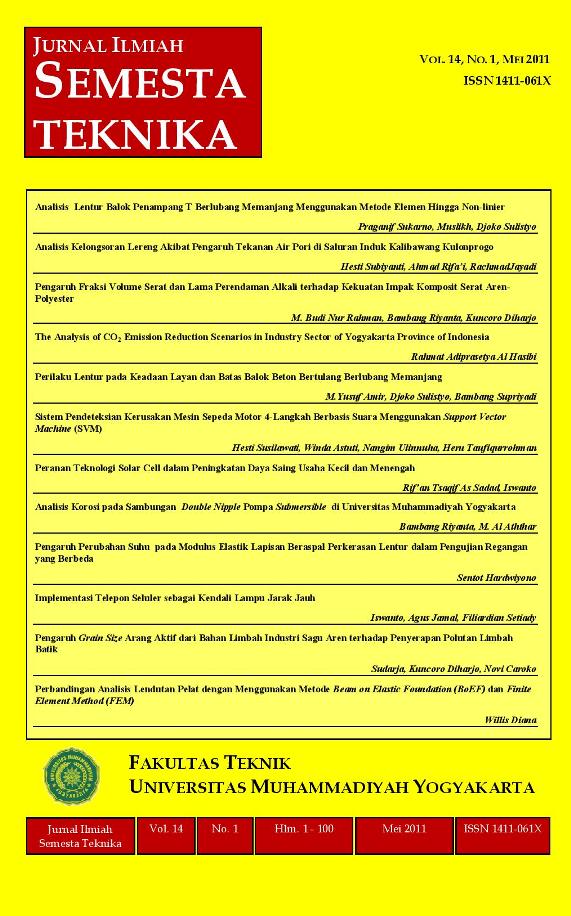Perilaku Lentur pada Keadaan Layan dan Batas Balok Beton Bertulang Berlubang Memanjang
DOI:
https://doi.org/10.18196/st.v14i1.570Abstract
I cross-section of reinforced concrete with reduced weight and concrete needs (in-complete sentence), but the reduction in strength is not considerably large. The implementation of I cross-section reinforced concrete beams is quite complicated and time consuming. This research was conducted to evaluate and compare the flexural behavior and the dynamic effects of a elongated hollow square beam that equivalent with a I cross-section beam. The specimens used in 4 (four) pieces of span 3500 mm, namely each one (1) beam control (BK) in the form of T beams with flange face down and 3 (three) beams with holes (BB1, BB2 and BB3) beam T looks like a hole in the geometry and materials together with 300 mm height, width and height of flange of 600 mm and 100 mm to 125 mm wide body BK BB 200 mm in width and height while the bottom flange BK 200 mm and 75 mm. Each specimen was statically loaded until failure, and dynamically loaded up to yielding occured using a vibrator machine. It was revealed that whilst both BK and BB capacity in terms of flexural strength is not significantly different, i.e. 2.03% for BB1, 2.49% for BB2 and BB3, and 3.96% for BK; for the flexural stiffness of the experimental results in a row BB1 -62.88% -63.58% BB2, and BB3 -22.70% to BK whereas the ductility consecutive BB1 4.699; BB2 2.094; BB3 2.225; 2.102 against BK. BK test beam that is equivalent to BB either does not guarantee the material and dimensions have the same natural frequencies for the system of joint-roller beam placement BB has a higher natural frequency with an increase of 14.061% compared to BK and placement system joints BB has a natural frequency higher with an increase of 10.145% compared to BK. For BK and BB crack pattern begins in the mid-span and the maximum load at failure crack pattern of flexural failure.
Downloads
Published
How to Cite
Issue
Section
License
Semesta Teknika is licensed under a Creative Commons Attribution 4.0 International License.
Authors who publish with this journal agree to the following terms:
- Authors retain copyright and grant the journal right of first publication with the work simultaneously licensed under a Creative Commons Attribution License that allows others to share the work with an acknowledgement of the work's authorship and initial publication in this journal.
- Authors are able to enter into separate, additional contractual arrangements for the non-exclusive distribution of the journal's published version of the work (e.g., post it to an institutional repository or publish it in a book), with an acknowledgement of its initial publication in this journal.
- Authors are permitted and encouraged to post their work online (e.g., in institutional repositories or on their website) prior to and during the submission process, as it can lead to productive exchanges, as well as earlier and greater citation of published work (See The Effect of Open Access).









